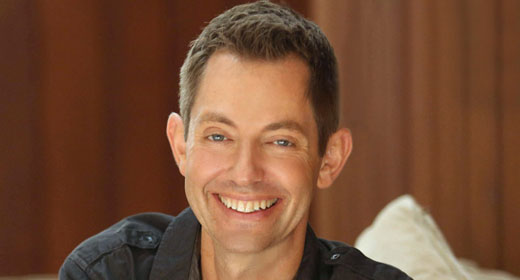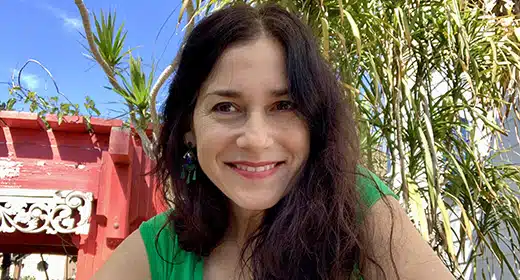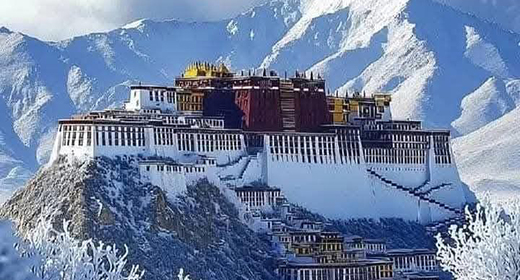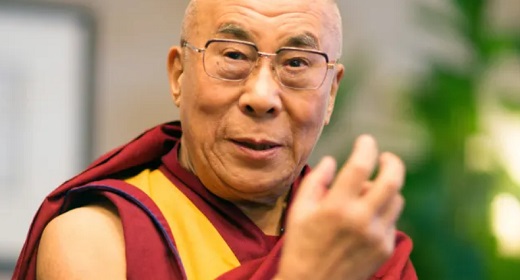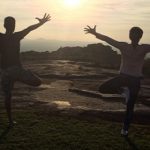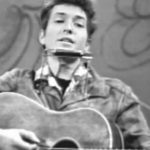by Michael Brenan: Dreaming was once an extraordinary affair for me…

When I was thirteen, I had frequent conscious dreams and out-of-body experiences. Typically, just prior to sleep, when my body was completely relaxed, I would shift without warning into a remarkable state of alertness. My physical body would feel numb and heavy, yet I would be entirely awake. Somehow I knew that it was then possible for me to leave my body.
Nearly every night over the next three years, I would drift toward sleep, only to
wake up and venture into dream worlds of breathtaking clarity and beauty. I was
fully conscious, and tremendously curious about everything I encountered. I
experimented endlessly with my senses, and with my ability to manipulate these
strange environments. But I could never determine whether the worlds I entered were
objectively real, or merely projections.
At age sixteen, I took part in a pioneering research study headed by Stephen
LaBerge. Using laboratory equipment and a series of prearranged signals, LaBerge
demonstrated that humans had the ability to be conscious within a physical state of
sleep. He called the phenomenon “lucid dreaming.” Yet even this scientific
validation did not entirely dispel my uncertainty, because it didn’t explain, for
example, how I could sometimes be simultaneously aware within both my physical body
and this “other” body. In the end, I decided my questions were unanswerable for the
moment, and the answers didn’t matter much anyway. The sense of exhilaration,
freedom, and joy I encountered in those inner worlds was the true value of the
experience.
Before long, that same heightened state of awareness began to carry over into my
ordinary day-to-day existence, imbuing it with richness and magic. Life became a
waking dream. As this sensibility grew, it came into conflict with everything I was
being taught. The priests who schooled me seemed to believe that the age of miracles
had ended two thousand years before. Science suggested that everything could be
reduced to base mechanics. And contemporary society counseled a safe and bloodless
course of birth, school, work, and death, interspersed with vapid consumerism.
By the time I was seventeen, I had begun to feel that there was something wrong with
me. I was beset by the usual adolescent insecurities, but on top of that, my
perception of the world did not match up with that of my peers. My fears overwhelmed
the spirit of beauty that I longed to articulate. To compensate for my perceived
cowardice, I embarked on a roguish course, taking up with a bad crowd and acting out
the turmoil inside me. In so doing I betrayed everything that was sacred to me, and
my anguish was enormous. Over the next fifteen years, I suffered extended bouts of
addiction, homelessness, and incarceration in jails and asylums. My dreams had
deserted me, only to be replaced by a waking nightmare. I was committing slow-motion
suicide, a process that reached its conclusion seven years ago, when I shared bloody
needles with two fellow addicts in a Lower East Side tenement in New York City.
Since then, my junkie companions on that occasion have both died of AIDS. Now,
sitting on the cusp of death myself, I find an empty space within me. Oddly, this
emptiness carries with it a certain abandon and a delicious sense of anticipation –
I have nothing to lose. My imminent mortality seems to offer a slim chance of
recouping what I’ve lost: my experience of the world as a waking dream of great
beauty and mystery.
It is in this state of mind that I receive an invitation to attend an Oakland
workshop given by associates of Carlos Castaneda, and to write about it as a
journalist. The purpose of the workshop is to teach a magical discipline Castaneda
purportedly learned from the Yaqui seer don Juan Matus. According to Castaneda, the
seers of ancient Mexico experienced states of enhanced awareness while dreaming.
They learned to recreate these states white awake using a collection of precise
movements called “sorcery passes.”
Shrouded in secrecy, this discipline was passed down through twenty-seven
generations of sorcerers, of which don Juan Matus was the last. Now Castaneda and a
few of his cohorts claim to be the contemporary stewards of this ancient sorcerers’
art, which Castaneda has named “tensegrity,” after an architectural term for
opposing forces in balance.
Another perspective, offered by Castaneda’s critics, is that he is the inventor of
this discipline, and of the myth of don Juan Matus. According to them, Castaneda’s
myth has its origins not in the preconquest world of the Toltecs, but in the summer
of 1961, when the then-thirty-seven-year-old UCLA anthropology student ventured into
the Sonoran desert in search of his Ph.D. There, beneath the broiling Mexican sun,
Castaneda presumably cooked up his engaging tales of sorcery.
Despite high praise for Castaneda from respectable academic, scientific, and
literary quarters, skeptics remain troubled by chronological inconsistencies in his
books, by his refusal to bring forth don Juan for public scrutiny, and by the
author’s own inaccessibility. In the end, don Juan Matus seems destined to haunt us
like a phantom glimpsed at the edge of our vision, quickening our hearts with the
possibility that sorcery still exists.
Six years ago, a new dimension to the controversy arose when two women – Florinda
Donner-Grau and Taisha Abelar – wrote elegant, dreamlike books describing their own
encounters with don Juan. Donner-Grau and Abelar revealed themselves to be
colleagues of Castaneda. A third colleague, Carol Tiggs, was mentioned in
Castaneda’s latest book, The Art of Dreaming, in which he described how, while
“dreaming together” with him in a Mexican hotel room, Tiggs disappeared from this
world, borne on the wings of “intent.” The “gales of infinity” blew her back to this
dimension ten years later, when Castaneda discovered her wandering in a daze in
Santa Monica’s Phoenix Bookstore. Her improbable return had “ripped a hole in the
fabric of the universe.”
Castaneda, Donner-Grau, and Abelar were thoroughly disconcerted by the implications
of this event. In the end, Tiggs persuaded her fellow travelers to adopt a radical
new approach to their work: for the first time, they would present the teachings of
don Juan openly, offering seekers the opportunity to explore in detail the legendary
seer’s fantastic practices.
They arrived at this unprecedented decision, they say, because they are the last of
their lineage and will soon “ignite the fire from within and complete the somersault
into the inconceivable.” More, they are opening up their discipline out of gratitude
to their teachers and benefactors, so that their ancient knowledge may live on.
Like many readers, I have been greatly moved and inspired by Castaneda’s books –
especially (for obvious reasons) his writings about the magical possibilities of
dreams. At the same time, I have maintained a journalist’s skepticism about the
whole affair. But now the creatures molded by the myth of don Juan Matus have
emerged from the fog of their inaccessibility and rustle through my awareness like
windblown leaves. I go to hear their message bearing questions, doubts,
anticipation, and a longing for magic to refute the soulless dreams of contemporary
society.
The six female instructors, called “energy trackers,” are standing in pairs atop
three raised platforms in the Oakland Convention Center. They are dressed martial
arts style, in loose-fitting pants and shirts, their hair cut short, all of them
exuding an attractive strength and athleticism. They range in age from eleven to
thirty-six, and come from Europe and America. Their manner is simultaneously
friendly and no-nonsense. They are here to teach, and the three-hundred odd
individuals surrounding them are here to learn.
Over the next two days the energy trackers demonstrate an elaborate series of
movements – the “sorcery passes” Castaneda has written about. The movements have
evocative names: Cracking a Nugget of Energy, Stepping over a Root of Energy,
Shaking Off the Mud of Energy. I have years of hatha yoga practice, and can confirm
some parallels between the two disciplines. Many movements also have a fierce,
martial mood reminiscent of aikido and karate. But there are some unusual elements
to the tensegrity system that I cannot place in any familiar context.
Among participants, there is an enormous mix of occupations – physicists, teachers,
engineers, artists, laborers, biologists – and nationalities: Spanish, Italian,
German, Russian, American, French. I speak to a variety of people, searching for
testimony to the movements’ effectiveness, and what I hear slowly begins to shake my
doubts.
One man, who in his youth practiced karate for six years, says he finds the
tensegrity movements uniquely powerful. “The more I’m exposed to tensegrity,” he
tells me, “the more I think that nobody could just make these movements up. There
are too many of them, they’re too sophisticated and systematic, and the results are
just too powerful.”
Mario, a Tarahumara Indian raised in northern Mexico who now lives in Los Angeles,
says he and a group of Mexican and Indian friends have long gathered informally to
practice strategies gleaned from Castaneda’s books. Now, due to this more formal
presentation of the teachings, they have increased their efforts. When Mario
describes some of his dreaming adventures, I am struck by their evident similarity
to the conscious dreams of my childhood.
“Recently, I found myself awake within a dream,” Mario says. “I was beneath a tree
on a hilltop; I am not sure where. My brother Joss, who lives in Oaxaca, was with
me. He asked me what I had learned in the workshop I had attended. I told him, and
we exchanged more information about our personal lives. I was fully conscious during
the dream, but when I awoke I had forgotten something: Joss had told me something at
the very end of the dream, and I could not recollect it.
“A week later, he called me from Mexico. Before I could speak he began describing
the dream to me: the same hill, the same tree, the same conversation. I felt a
chill, and a sense of awe. Then he asked if I remembered what he had told me at the
end of our dream, Before he could say anything more, my ears began ringing loudly,
and the forgotten scene replayed itself in a flash. He had thanked me for bringing
him to this path.”
Over the course of the weekend we hear from all three of Castaneda’s fellow
teachers. Speaking first, Florinda Donner-Grau looks out over the audience and
smiles like a Cheshire cat. Her brush-cut blond hair and elegant cheekbones look
strongly Teutonic, and she speaks with precise diction, as if each word were a
delectable morsel:
“Don Juan Matus presented four faces to his four disciples. To Carlos Castaneda he
was a fierce and fearsome presence of terrible import and beauty. To Taisha Abelar
he was an enigmatic yet intensely familiar figure. For myself he was an abrupt
intrusion into my world, at once unsettling and soothing. For Carol Tiggs he was a
gentle, fatherly figure capable of tremendous affection.”
She goes on to tell us that, in the world of sorcerers, women are gifted creatures
by virtue of their affinity with the feminine nature of the universe. Using their
womb, they are able to access universal energy and accomplish stupendous feats of
transformation. But at the same time, women must contend with the immensely
stupefying effects of their socialization. In short, they are trained from birth to
be bimbos, and only by unyielding effort can they escape that fate.
“Don Juan asked me,” Donner-Grau says, “in a very matter-of-fact tone, whether I
wanted to be a stupid cunt for the rest of my life…. You must understand, I come
from a very proper Spanish-German family. No one especially not a man – had ever
used that word in my presence. I was horrified and insulted.”
Given the delight with which she recounts the episode, I can only conclude that at
some point she got over her mortification.
For me, the defining moment of her talk comes when she speaks of death:
“Death is your truest friend, and your most reliable advisor. If you have doubts
about the course of your life, you have only to consult your death for the proper
direction. Death will never lie to you.
Taisha Abelar is elegant yet energetic. I cannot place her accent, but her overall
speech and appearance bring to mind a sixtyish Katharine Hepburn. I am intrigued by
the differences between her dream experiences and mine.
“I was on the roof of a building,” Abelar says,-“in the middle of a strange city.
Suddenly, from above I heard a terrible racket, and I saw a black shape descending
toward me out of the sky. I moved immediately, and as I did saw that the black shape
was actually a helicopter, and the horrible noise was the sound of its blades
slicing the air. If I had stayed another second on that roof, I would have been
mincemeat.”
At first I am puzzled by this, because in my conscious dreams I could manipulate the
environment in extraordinary ways. I wonder why Abelar did not will the helicopter
away, or make it burst into flames. Then it dawns on me: she’s talking about
transporting her physical body into those worlds.
For the next hour, she recounts wild tales that make me think her either insane or
an accomplished liar. But everything in her manner suggests sobriety and sincerity,
and I am forced to recognize a third, nearly inconceivable alternative: that she is
faithfully reporting her experiences.
For her part, Carol Tiggs describes dreaming adventures every bit as bizarre and
otherworldly as Abelar’s, but most of her tales involve dreaming together with
Carlos Castaneda. Like Castaneda, Tiggs identifies herself as a nagual, a Toltec
term meaning “teacher” or “leader.” The affinity that links a nagual woman and a
nagual man and allows them to dream together is described in several of Castaneda’s
books. It is neither a romantic nor a sexual bond, but something much more profound.
Toward the end of her talk, Tiggs answers a question from the audience about
Castaneda’s health (word is that he’s ill), and I sense the fierce affection between
them. She grows still. Drawing a deep breath and releasing it slowly, she smiles as
if through tears and says, “Our brother Carlos could not join us because he is
battling an infection. We do not know the nature of his illness. A sorcerer cannot
avail himself of traditional medicine; he must rely on the spirit, and on his own
resources. Before a sorcerer reaches the threshold where his body no longer
functions, he will choose, if he can, to kindle the awareness of his entire being,
in order to leave this world intact and whole. And our brother Carlos has made a
promise to include us in that final act. But we do not know if this is the time of
his leaving.”
She pauses, and when she speaks again, her voice is hushed with wonder. “We are here
together, in a bubble outside of time, dreaming the dream of the ancient Toltecs. By
your efforts, you have helped us to expand and accelerate into the unknown. We thank
you, ” she concludes softly, spreading her arms to the audience, “and we embrace you
in the dream.”
As I drive back to Portland Sunday night, I look for changes in myself and find
instead that the discontent and emptiness that have plagued me for half my life have
intensified tenfold. I remain outside the great mysteries, endlessly writing,
endlessly doubting.
On top of this, my body erupts: my left testicle swells to twice its normal size,
and chickenpox afflicts me from the crown of my head to the soles of my feet. I go
to a traditional Chinese doctor whose wisdom is derived from a long historical
lineage. He takes my pulses and examines my tongue, then sits back and nods his head
repeatedly, like a thirsty crane dipping for water, all the while murmuring in
Chinese. He prepares a complex concoction of herbs, which I consume, summoning what
gratitude I can for the plants that have given their lives for mine.
A few weeks pass, and I regain my equilibrium, but my doubts about Carlos Castaneda,
which have never really left me, become more insistent. I vacillate between my
memories of the practical results reported by the tensegrity practitioners, and
knowledge of our ability to interpret myths in the fashion most befitting our needs.
Everything comes down to the authenticity of don Juan and his Toltec predecessors.
Was don Juan Matus a myth invented by Carlos Castaneda, or was he a flesh-and-blood
sorcerer of mythic proportion? I am aware that only one person can answer that
question for me.
Then the seemingly impossible happens: my silent wish is granted, and I receive an
unexpected invitation to meet with and interview Carlos Castaneda.
Given my shortcomings – I have led a life of indulgence, have written no grand
epics, barely graduated high school, and know nothing of science or anthropology – I
should be enormously intimidated. But instead, from the moment the invitation is
extended, I experience a profound and soothing sense of surety. If Castaneda is
merely an inventive rogue, then I will have lost nothing but my illusions. But if he
is a bona fide heir to the legacy of Toltec seers, then I will have gained a gift of
incalculable value – the possibility of restoring magic to the remainder of my life.
A lovely quietude comes over me in the wake of this realization, bringing with it a
tremulous sense of anticipation and – most remarkable for me – an overwhelming ease
and confidence. Everything has come full circle. There seems nothing left to do but
greet the unknown.
I look up from the four single-spaced pages of questions I have prepared and glimpse
a party of three weaving their way toward me through the Santa Monica restaurant.
The woman who arranged the interview for me is in front. She introduces me to one of
the energy trackers from the workshop, and then to the little man behind her –
Carlos Castaneda. The ease of the last few days does not abandon me, and I greet
Castaneda with a relaxed mixture of respect, affection, and professional skepticism.
He is gracious and unpretentious, and rolls up the sleeves of his rumpled white
shirt with Old World courtliness as we settle into our seats. I fuss with my notes
and study him with covert glances. From my research I know that he is Peruvian-born
and at least seventy-one years old. He appears, however, to be in his early sixties.
He is perhaps five-foot-two, with skin the color of burnished copper, a thatch of
salt-and-pepper hair, and an elfin frame. His face is handsome and weathered, a
symphony of angles and furrows that suggest classic Spanish features. His eyes are
sharp and lucid, his expression by turns thoughtful, friendly, and playful. He
offers me some bottled water, and this small gesture seems to embody generosity. I
feel as if I am among friends.
For the next three hours I ask sporadic questions from my lengthy list, but mostly I
am absorbed in listening and taking notes.
“This discipline is an internal affair,” Castaneda says at one point. “There are
techniques, but they must be fortified by a decision, and by a feeling from within.
You need to arrive at that decision and feeling yourself. For me, it is a matter of
daily renewal.”
Talk of discipline prompts me to ask about something he once said: that quitting
smoking could be a revolutionary act.
“You don’t smoke, do you?” he inquires, frankly curious.
“In honor of this occasion,” I reply, “I have left my smokes at home.”
He seems unperturbed by my admission, and by the banality of my problems.
“I started smoking when I was eight,” he says. “I wanted to be like these older
Argentinian guys. You should have seen them; they were the coolest guys in the
world.” With an absurdly suave pantomime he mimics the coolest guys in the world,
squinting his left eye and tilting his head to blow an invisible cloud of smoke into
the air. “One day, don Juan told me to stop smoking. I replied that I liked smoking
and would stop when I was ready. Then I tried to quit and couldn’t; not the first
time, or the second time. Even all these years later, I still find myself patting my
breast pocket for the cigarettes that are no longer there. These routines are
difficult, but not impossible, to break,” he concludes. “You merely have to jump the
– ”
His last word is lost to the lilt of his accent. I let it pass and listen as he
describes a woman friend of his who was dying in a hospital. (I have said nothing of
my own illness at this point, nor does my appearance give any clue.)
“I loved this woman dearly,” he says. “She was a tremendous friend. I asked don Juan
what I could do for her. He described a strategy to me, and I passed it on to her. I
told her she must push her illness away with her hand, with her intent, repeatedly,
for as long as it took. She replied that she was too weak to lift her arm. ‘Then use
your foot!’ I cried. ‘Use your heart; use your mind! Intend it out of you!’ But she
no longer had the energy to do so.”
Without prompting on my part, he begins talking about his recent illness, which he
describes as “a vicious viral infection.” I am spooked by the parallel to my own
life, and momentarily stop taking notes in order to observe him. He matter-of-factly
describes a bout with a deadly infection, and how his discipline compelled him to
refuse the conventional treatments offered by a doctor. The upshot – that his
apparently life-threatening condition resolved itself – is obvious from the fact
that he now sits across from me, a bundle of energy.
“I have been reading a book by the ex-wife of Carl Sagan,” he continues. “She has
this theory about the viral nature of the body. She theorizes that, physically, we
are simply sacks of viruses. We live in a predatory universe, and nothing is more
predatory than viruses.
“We are creatures who will die,” he adds, almost as a non sequitur, and it is too
much for me. I have come here under the guise of a journalist, but in fact I’ve
known all along that I am seeking a healing of the heart before I leave this earth.
My time seems short, and before I can stop myself, I rudely interrupt him.
“I have a personal question,” I begin.
“Please, please,” he says kindly, beckoning with his hands. “Ask anything you like.”
“Well,” I say, “I hate melodrama. So I will just say that I have a health condition.
There is a lot of leeway with it, but the conventional wisdom is that . . .” I look
away, loath to appear manipulative or needy.
“Perhaps a few more seasons,” I murmur. “A few more blows to my system, and-”
I flick my wrist as if sweeping dust from the table: poof, swish, gone.
What I have done seems terribly unprofessional to me; yet, I think childishly, he
started it, with his books, with his straightforward assertions that in this day and
age we are still capable of experiencing the world as magic. I feel a sense of
displaced anger and longing, as well as the anguish that I have carried since I
first turned my back on all that was sacred to me.
Holding my gaze intently yet dispassionately, Castaneda launches into another
lengthy tale, this one about an alcoholic friend of his. He regards me from beneath
slightly lowered lids, as if squinting into the sun. His eyes are keen and bright,
like slivers of obsidian, yet their effect is neither hypnotic nor overpowering.
Rather, they seem to hold a kind of open challenge.
“So, ” he concludes, like a professor summarizing his wisdom, “I would move. I would
jump the – .”
Again, I lose his last word, and my anxiety must be apparent, because he repeats
slowly, “I would jump the groove.”
He pauses to lift an invisible needle from a turntable, his eyes never leaving mine.
“I would change the groove,” he says. “I would move.”
My adolescent journals are full of this same metaphor. At that time, the one-track
groove that the stylus followed on a record symbolized for me the habitual nature of
my mind. Changing the groove meant changing those habits that robbed me of my
ability to experience ordinary life as full of beauty and wonder. The three routines
I most sought to change were my habit of picking my nose, my adolescent temper. and
– hardest of all my endless capacity for rehashing old events in my mind instead of
simply letting go.
Now, at age thirty-six, I find it is only my temper that has mellowed. I still pick
my nose, and I am still capable of endlessly justifying, defending, and excusing my
past actions. To these insipid routines I have added, over the past seven years, the
habitual momentum of dying. I have known from the moment I shared that needle
that a part of me was conspiring in my own death. In the interim, that same part has come
to view AIDS as a fitting punishment for my sins, or perhaps as the articulation of
my spiritual barrenness.
Yet, throughout it all, something resilient within me has refused to die. I prefer
to call that inviolate something “spirit,” and it is that same spirit that is
aroused in me now as I listen to Castaneda’s prescription for change. Death is the
one inexorable fact in our transitory lives. Perhaps I will die a doddering old
fool; perhaps I will die before the sun sets tonight. But I will die – that much is
certain. In the meantime, what remains within my control is the groove of my life,
the track upon which I choose to walk between the exclamation of my coming and the
ellipsis of my going. At its purest, this track is trackless, like a path covered by
freshly fallen snow.
And trodding such virgin paths is the most enduring image of my adolescent dreams.
By speaking directly to that memory, Castaneda has reawakened it within my heart.
Given the perilously low ebb I have reached in life, I can only describe this feat
as a genuine act of sorcery.
Ah, but what of don Juan Matus, the mythic Yaqui seer whose bones I have come to
exhume? Does he sit before me now, a trickster-teacher weaving deceptive tales of
wisdom, folly, and truth? I do not know, and cannot say.
Three hours have passed, and Castaneda is gently signaling the end of our meeting by
unrolling the sleeves of his weathered cotton shirt. There is still time for that
final and most compelling journalistic question, but something within me lets it
pass.
And then, unexpectedly, the silence is broken once more by Castaneda’s lovely
accent. His gaze is fixed in the distance, and he speaks softly, his words like
those of a man confronting an insoluble mystery. Again, I study him for evidence of
deception and come away empty-handed.
“If I could ask don Juan one final question,” he begins slowly, “I would ask, How
did he move me so? How did he touch my spirit so that every beat of my heart is
filled with the feeling of this path?”
“Every beat of my heart,” he repeats quietly, and for a brief moment his words seem
to hang in the air like fog. Then his whispered phrase is touched by time, and
disappears into the mystery that surrounds us.

